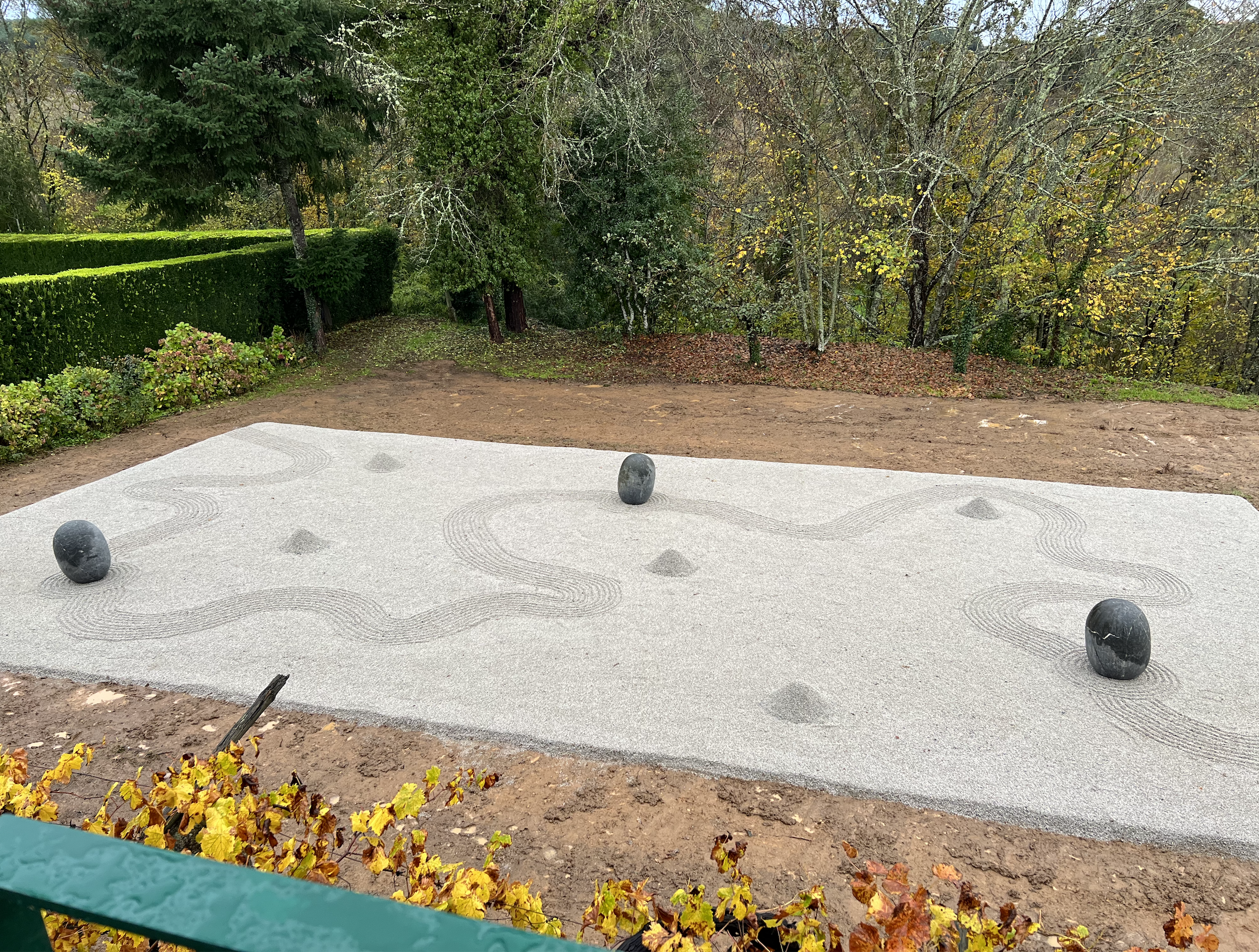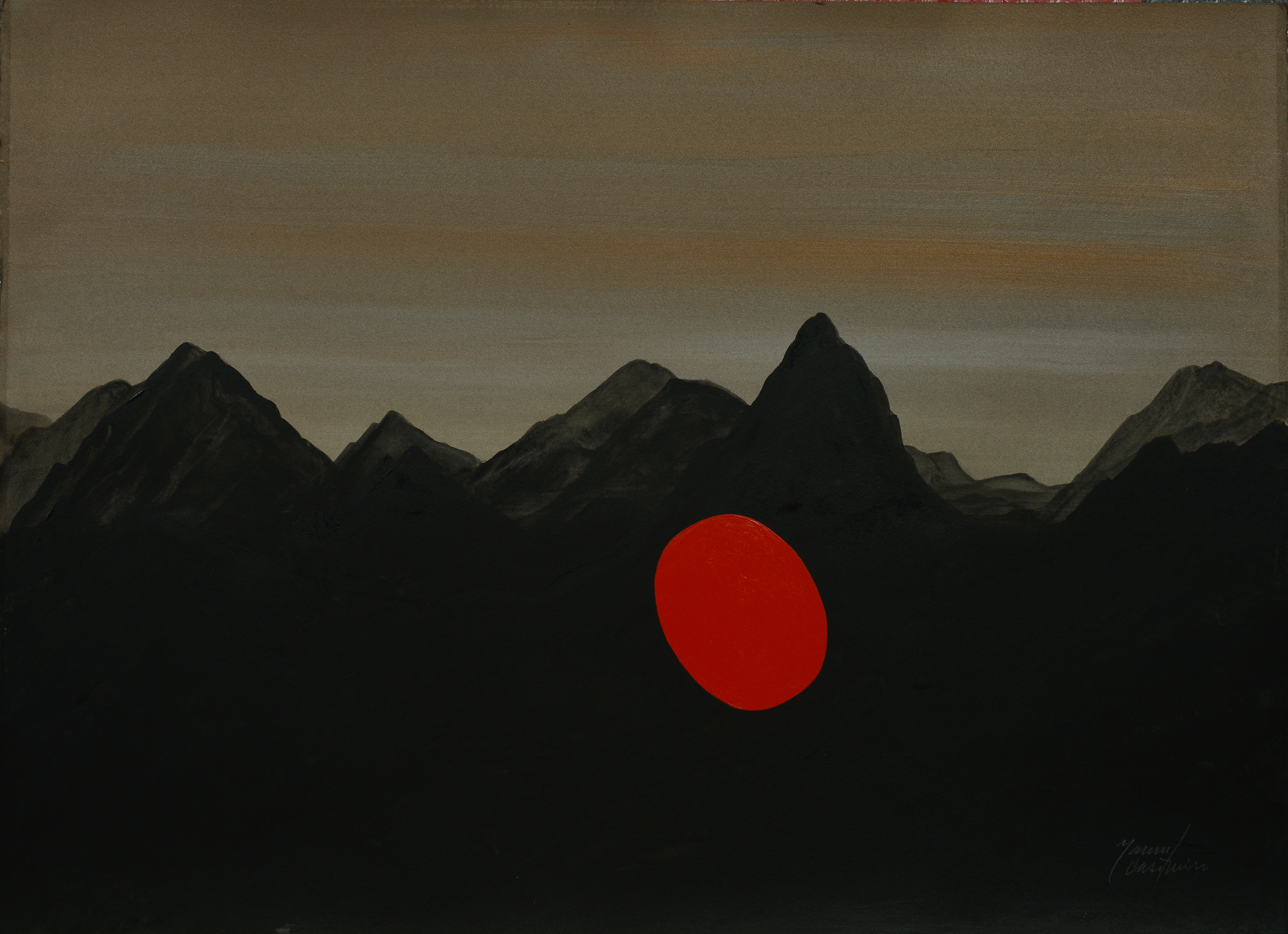The Painted Garden
a permanent sculpture installation
May 25, 2024
5000-291 Vila Real
Portugal
The Painted Garden
In Casimiro's words, “Climbing a mountain requires effort that also leads to reflection, effort and reflection being two important foundations of life and art.” [...] And, “Climbing a mountain helps us realise that we are also part of Nature, understand the intrinsic value of all the elements of the world we live in, and aim for the emergence of what Nietzsche termed going beyond man. In our everyday language, we also associate the top, the mountain’s peak, its highest point, the summit, with the elevation of human behaviour.”
The permanent installation of the work Painted Garden [Jardim Pintado] in the gardens of Fundação Casa de Mateus, not being, in Manuel Casimiro’s words, painted, has a lot to do with Painting, specifically traditional Chinese Paintings of mountains. As we know, Zen Buddhism arrived in Japan through China.
In the large black marble ovoids on the gravel, we can sense yet-to-be-climbed mountains emerging from an imaginary lake now seated in a windrow just over 20 km from the Douro River. In this work, after such a long imaginary journey, there is a “détournement” of the classic and very touristy Japanese Zen garden. Its reincarnation on an ancient Portuguese farm is an apparent postmodern wink.
Manuel Casimiro's work, as he often notes, is a provocation and a challenge to each person’s thinking. He brings space and time together, preserving the memory of the past in the present that passes and is already the future. He describes it as a fixed plane that leads to movement when it reinvents itself in thinking and Painting.
On The Painted Garden by António Cerveira Pinto
O Jardim Pintado (The Painted Garden)—a 1992 project materialized and exhibited for the first time in 1996 at the National Museum of Contemporary Art, followed by a second installation at Fundação de Serralves in 1997. You can see it now in a magnificent field adjacent to the so-called Jardim das Coroas. It is not an appropriation of a Zen garden but rather the translation of a fundamental index of Japanese culture to the mental and artistic universe of Western Europe in an era in which the modernisms and avant-gardes shamed since Hiroshima were giving way to a mix of irony and melancholy that is conventionally called “postmodern condition”. We can, on the other hand, and without effort, see in this “Casimirian” garden a tribute to the first and surprising encounter between Portuguese and Japanese in the distant year of 1541 or 1543. The polished lightness of three black marble ovoids placed on an immense gravel carpet simultaneously marks the proximity and difference in the affections and thoughts of two peoples separated by geography and united by memory. The Douro landscape and the Baroque context of Casa de Mateus guarantee this artwork the visitation it deserves.
The guiding thread of practically all the works that Manuel Casimiro has created since 1969 is a kind of ironic mystery with a post-structuralist nature, which the author calls, for convenience of language, “ovoids”.
The strangeness of these oval shapes, primarily black but sometimes also blue, yellow, red and, more recently, gold, was a reason for reflection by at least forty writers, including philosophers, historians, art critics and European novelists, from which I highlight names such as Agustina Bessa-Luís, José Régio, Eduardo Lourenço, José Augusto França, Bernardo Pinto de Almeida, Paulo Cunha e Silva, Jean-François Lyotard, Pierre Restany, Jean-Hubert Martin, Michel Butor, Vincent Descombes, Christine Buci-Glucksman, René Prédal, Giulio Giorello, José Luis Molinuevo, António Cerveira Pinto and Jonathan Lahey Dronsfield.
If any metaphor were capable of synthesising the work of the most genuine Portuguese postmodern artist, it would perhaps be an eagle flight at various altitudes and speeds over the very artistic creation offered democratically to the masses through what Walter Benjamin called The Work of Art in the Age of Mechanical Reproduction. Read more.

